Mark the correct statements
Important Questions on Laws of Motion
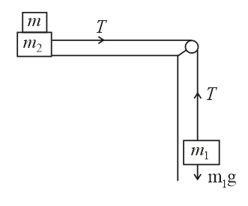
(density of water is )
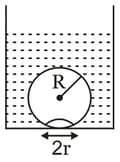
[Young's modulus for copper and steel are and respectively]
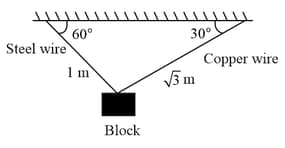
A particle moving with velocity is acted by three forces shown by the vector triangle . The velocity of the particle will
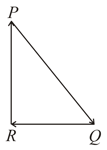
Four identical beakers contain same amount of water as shown below.
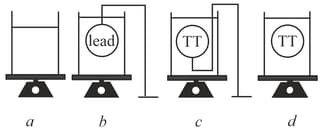
Beaker contains only water. A lead ball is held submerged in the beaker by string from above. A same sized plastic ball, say a table tennis ball, is held submerged in beaker by a string attached to a stand from outside. Beaker contains same sized ball which is held submerged from a string attached to the bottom of the beaker. These beakers (without stand) are placed on weighing pans and register readings and for and respectively. Effects of the mass and volume of the stand and string are to be neglected.
A block of mass rests on another block of mass and is tied to a wall as shown in the figure. The coefficient of friction between and is and that between and ground is . The minimum force required to move the block is


